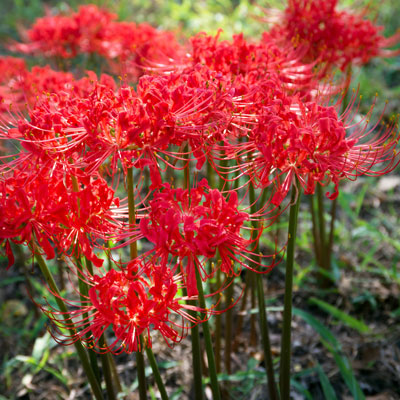These Spiders Aren’t Scary

If you grew up in Texas, or if you’ve gardened here very long, you know this plant from old neighborhoods all over our state. It’s by far the best known of all our fall-flowering bulbs, and it’s ready to dazzle for another great year.
Botanically, spider lilies go by the name Lycoris radiata. They’re a southern heirloom bulb (best in Zone 7 and southward) that our great-grandmothers grew, usually beneath large trees where they had little competition from lawngrasses and flowers.
For most of my lifetime, I knew spider lilies as passalong plants that were handed from one family member, friend or neighbor to another. Only in the past 20 or 25 years have I seen them sold in nurseries with any regularity. In fact, they’re in stores right now, so shop soon, hopefully before they come into bloom in your town. Once people see them, supplies sell out very quickly.
Spider lilies do best when they’re planted in afternoon shade and allowed to remain undisturbed for many years. Yes, they do multiply, but they do so rather slowly. Regional and national bulb vendors sell them as well.
Spider lily bulbs are about the size of ping pong balls, which means you’ll want to plant them 3 or 4 inches deep. I prefer to plant mine in clumps of several bulbs just a couple of inches apart, rather than in long, straight rows.
When they’re in full bloom spider lilies grow to 15 or 18 inches in height, so you can use them toward the fronts of your perennial gardens. Mark where you plant them, however, because there is absolutely no sign of them from late spring when their foliage disappears until they start flowering at this time, and you might otherwise be tempted to start planting annuals or other perennials right where you have them.
Finally, you may read about white- or pink-flowering forms. I have a few of each, and my suggestion is that you leave them for others to collect. They pale by comparison to the cherry red type you see in my photo.
